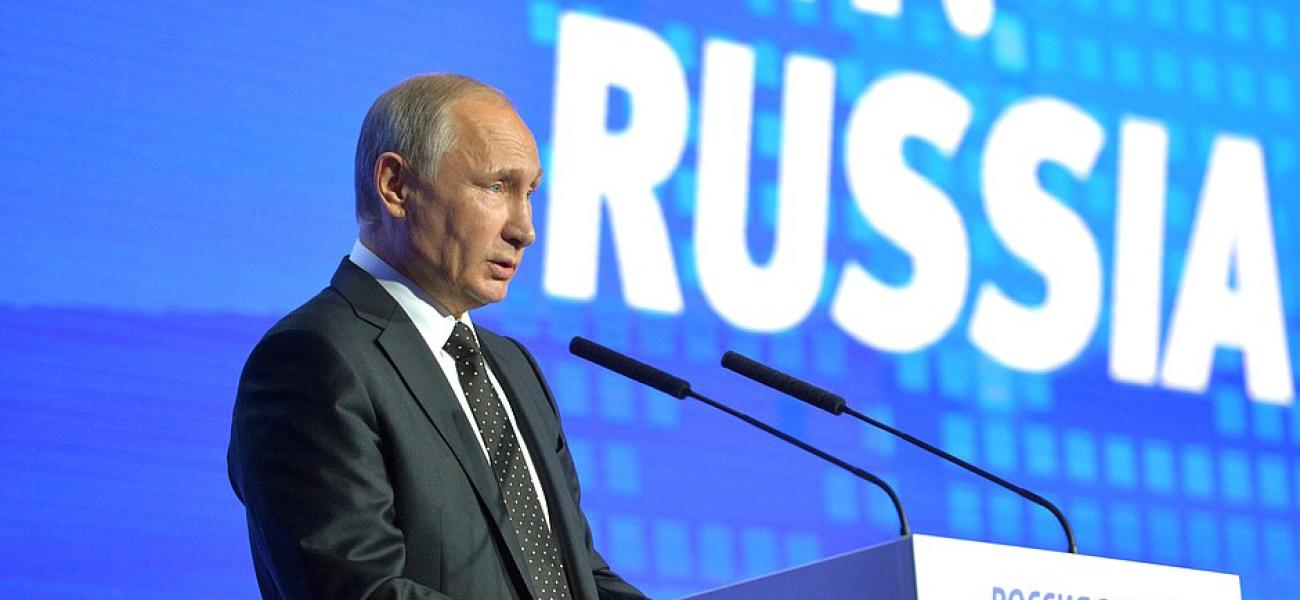
To Deal with the Russians, America Must Think Like the Russians
This article originally appeared in The National Interest with the subheading: "The risk of nuclear miscalculation is now higher than at any time since the Cuban Missile Crisis. There’s a simple way to avoid it." The new partisan perceptions chart referred to by the author is available here.
The current low point in U.S.-Russia relations echoes the worst days of the Cold War. In March 1983, President Ronald Reagan called the USSR an “evil empire,” provoking a bitter reaction from Soviet leader Yuri Andropov and the Politburo, which declared in June that the U.S. media was at the “highest, most hysterical pitch.” In September, a MIG fighter shot down Korean Air Lines Flight 007, which had strayed into Soviet airspace, killing 269 innocent people. In November, according to a declassified top-secret U.S. intelligence review, Andropov put Soviet nuclear forces on a “hair trigger,” fearing that the United States was about to launch a first strike under cover of the NATO military exercise “Able Archer.” Recent studies suggest that the November event was not as dangerous as often portrayed, but experts agree that the risk of inadvertent war was extremely high. Fear of a nuclear war unleashed by miscalculation, Russian insecurity or an accident in time of crisis was a factor that pushed Reagan and Margaret Thatcher to engage the Russians to end the Cold War.
This June, at the St. Petersburg International Economic Forum, Vladimir Putin angrily denounced the “hysteria” in Washington and in the U.S. media. Again, bitter accusations and scorn abound. Both U.S. and Russian experts now agree that once again there is a heightened risk of unintended nuclear war—much higher than in the early 1980s—but this danger is not as widely perceived as it was back then. There is less awareness, less alarm. Few people know as much about nuclear policy as William J. Perry, a former secretary of defense. He has been on a crusade this year, warning, “We are starting a new Cold War. We seem to be sleepwalking into this new nuclear arms race. . . . We and the Russians and others don’t understand what we are doing.”
The risk of nuclear miscalculation is now higher than at any time since the Cuban Missile Crisis, due to increasingly lethal technology and the breakdown in almost all official mechanisms of bilateral communication since Russia’s annexation of Crimea. Yet that is only part of the story. In the 1980s, few could imagine today’s advances in robotics, artificial intelligence, data processing and geospatial analysis. The complex interactions and tightly coupled systems linked to modern nuclear arsenals—early-warning and command-and-control systems—have made accidental war more likely. Moreover, the Russians and Americans have to face new nightmare scenarios, like a terrorist hacking a nuclear command-and-control center or a ballistic-missile submarine.
If the Kremlin received intelligence of a possible U.S. attack, it could reasonably expect to have no more than seven to ten minutes to assess the information before Moscow was destroyed. Washington would not have much longer, and the new president is untested in crisis. In place of the regular contacts and civil discourse established by the Reagan-Gorbachev Summit in 1985, Washington and Moscow now have frequent dangerous military encounters.
It is a depressing picture: America and Russia seem to be blindly repeating the errors of the past, creating a nuclear déjà vu even more menacing than before.
Continue reading at The National Interest
Bruce Allyn
Bruce Allyn is a senior fellow and affiliated faculty at the Program on Negotiation at Harvard Law School, and a former director of the Harvard-Soviet Joint Study on Nuclear Crisis Prevention.
Photo credit: Kremlin press service at Kremlin.ru.

